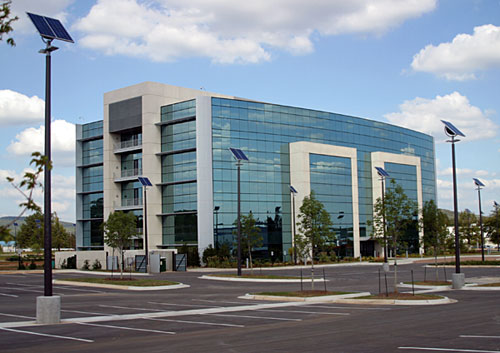Solar Lighting: Making Steps Off-Grid towards a Sustainable Future
Convenience/flexibility. Installing traditional electric lighting in sensitive project sites with existing hardscape and landscape features may be prohibitive due to the high cost of restoring the site to its original condition (e.g., memorial sites, registered historic landmarks, and areas densely packed with underground utilities). Examples like this point out how off grid solar lighting can add convenience when lighting is required, even if electricity is present on site. Another convenience may be realized during utility power outages. The off-grid lighting will continue to operate allowing the owner of the system to experience first hand the benefits of their investment at work.
Environmental impact. Design professionals and owners who want to minimize their impact on the natural environment have plenty of reasons to go solar. Using a renewable energy source, such as the sun, to power lighting eliminates the need to burn additional fossil fuels for power generation and reduces the production of carbon dioxide released into the atmosphere. Solar lighting systems by design are sustainable long-life products. Most solar panel manufacturers offer warranties on power output of their modules from 15 to 25 years. For this reason solar-powered lighting manufactures attempt to engineer systems with components and finishes that will perform as long as possible. Low wattage optimized lighting distribution ensures that every lumen generated by the lamp is directed to the specific task at hand. This affects the environment by preventing any stray light from polluting the night sky, reducing light trespass onto neighboring properties and controlling high angle brightness to improve visual comfort and performance.
 |
Innovative design for a large parking facility in AL Photo: SELUX Corp. |
Â
Meeting design guidelines and energy codes. Today, design professionals are often required to meet strict Lighting Power Densities for exterior lighting as outlined in ASHRAE/IESNA 90.1. This is a clear advantage for solar lighting which uses zero watts per square foot of utility electric. Lighting performance criteria is usually outlined in some form by ordinance, code or guideline. Light output and distribution of solar-powered luminaires today have the ability to meet challenging criteria being enforced by project mandates and municipalities.









